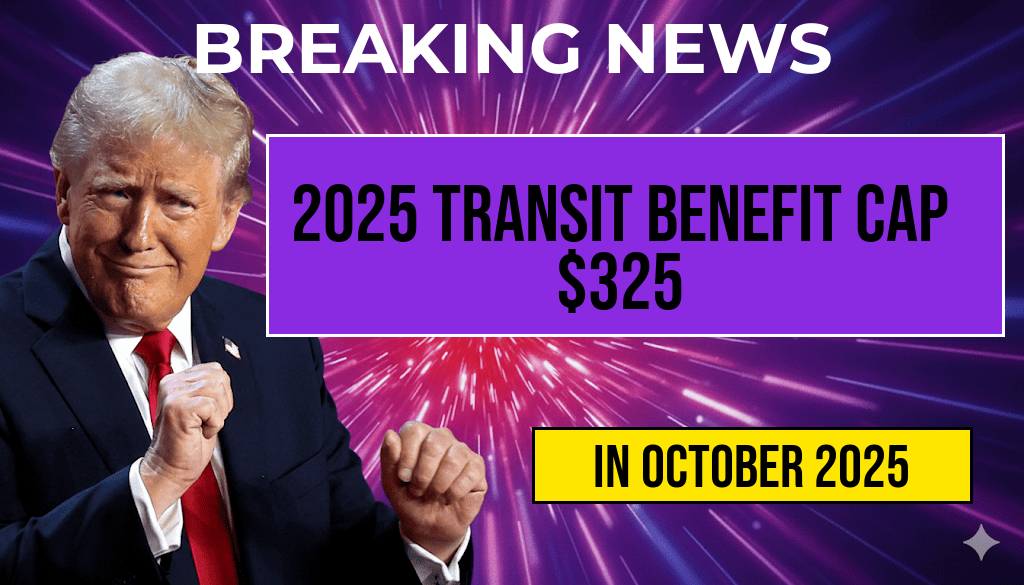The transit benefit cap for 2025 has been officially set at $325 per month, marking a significant adjustment aimed at balancing employer support and federal policy changes. This cap restricts the maximum amount that employers can exclude from employees’ taxable income for transit and commuting benefits under the federal tax code. The new limit, effective January 1, 2025, reflects ongoing efforts to modernize transportation incentives amid evolving commuter needs and inflationary pressures. Employees who utilize transit benefits, such as subway, bus, or vanpool passes, may see changes to their available pre-tax savings, depending on their employer’s offerings. This article provides a comprehensive overview of the 2025 transit benefit cap, breaking down how it impacts commuters, employers, and the broader transportation landscape.
Understanding the Transit Benefit Cap and Its Purpose
What is the Transit Benefit Cap?
The transit benefit cap is a limit set by the federal government on the maximum amount of transit and commuter benefits that employers can provide tax-free to employees. Established under the Internal Revenue Code 132(f), this cap encourages employer-sponsored transportation benefits while controlling federal revenue loss. For 2025, the cap increases to $325 per month, up from the previous year’s limit of $300. This adjustment aligns with inflation and rising transit costs, enabling workers to leverage increased savings without overburdening federal budgets.
The rationale behind the cap adjustment
The U.S. Department of the Treasury and the Internal Revenue Service (IRS) review the cap annually based on inflation metrics, primarily the Consumer Price Index (CPI). The 2025 increase aims to reflect current economic conditions, providing greater flexibility for employees relying on public transportation. By raising the cap, policymakers seek to promote environmentally friendly commuting options, reduce traffic congestion, and support urban mobility.
Impacts on Employees and Employers
How employees benefit from the new cap
- Enhanced pre-tax savings: Employees can now set aside up to $325 monthly on transit costs without paying federal income tax, Social Security, or Medicare taxes.
- Greater flexibility: Higher limits allow commuters to purchase more comprehensive transit passes or multiple fare products, increasing convenience.
- Potential for increased uptake: Employers may be encouraged to expand transit benefit offerings, knowing the maximum tax-free amount has risen.
Employer considerations and potential adjustments
Employers offering transit benefits must review their policies to ensure compliance with the new cap. Many companies provide transit stipends or pre-tax benefit programs that can now be adjusted upward. Some organizations may choose to elevate their maximum benefit levels, aligning with the federal cap, which could incentivize more employees to participate. Additionally, businesses should communicate these changes clearly to avoid misunderstandings and maximize participation.
Comparison of 2024 and 2025 Transit Benefit Caps
| Year | Benefit Cap |
|---|---|
| 2024 | $300 |
| 2025 | $325 |
Broader Implications for Urban Transportation
Promoting sustainable commuting options
The increase in the transit benefit cap aligns with federal initiatives to promote environmentally sustainable transportation. Higher tax-free benefits can motivate commuters to choose public transit over personal vehicles, reducing greenhouse gas emissions and traffic congestion. Cities and transit agencies may also leverage this adjustment to attract more riders and secure funding for expanded services.
Policy context and future outlook
The cap adjustment is part of a broader trend toward modernizing transportation incentives. As remote work continues to influence commuting patterns, transit agencies and employers are reevaluating benefits to meet new demands. Future adjustments will likely consider technological advancements, such as integrated mobility apps and flexible transit passes, further shaping the landscape of commuter benefits.
Additional Resources and References
Frequently Asked Questions
What is the new 2025 Transit Benefit Cap?
The 2025 Transit Benefit Cap limits the maximum monthly transit benefit to $325, impacting how much employees can receive in pre-tax transit benefits each month.
How does the Transit Benefit Cap affect my monthly savings?
The cap reduces the maximum pre-tax amount you can set aside for transit expenses to $325 per month, which may decrease your monthly savings compared to previous years where no cap existed.
Who is impacted by the Transit Benefit Cap?
Employees who receive transit benefits through their employer are impacted, especially those who previously received benefits exceeding the $325 limit, as they will now have a cap on their eligible benefits.
Can I still receive transit benefits above $325?
No, starting in 2025, the Transit Benefit Cap limits the benefit to $325 per month. Any benefits exceeding this amount are no longer eligible for pre-tax savings and may be paid as taxable income.
What strategies can I use to maximize my transit savings under the new cap?
You can consider adjusting your commuting options, exploring alternative transportation, or combining benefits with other employee perks to maximize your monthly savings within the $325 limit.






